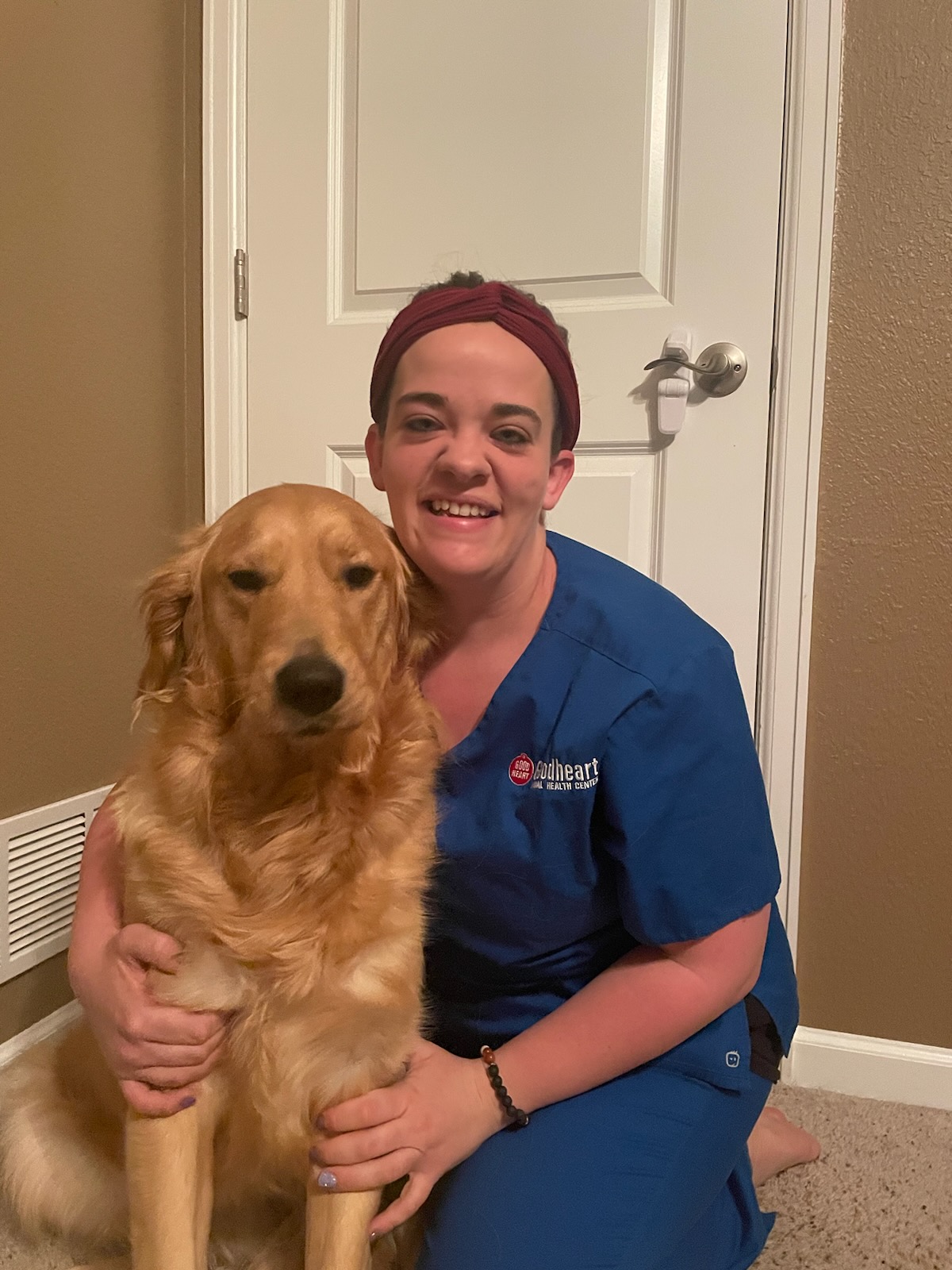3 min read

Megan with Mazikeen, her 1½ year old golden retriever.
“Mazikeen’s microchip makes me feel comfortable that if she ever got lost, I’ve increased the chances of a reunion,” says Meghan, a Client Services Coordinator at Goodheart Broadway.
A microchip is a grain-of-rice-sized, electronic device. It’s placed just under the skin between the shoulder blades. The chip contains a unique ID number that can be scanned by a veterinarian or shelter to identify your pet if he gets lost or stolen.
May is Chip Your Pet month. It’s a great time to update your microchip (if you have one) and remember that even the most well-behaved, calm pets can get anxious and run away. Our doctors once helped a dog who jumped through a window on New Years Eve. The Fireworks were too loud for him.
Sometimes our garden gate is left open by accident, letting our dogs run free. Cats have been known to slip out of the house during holiday parties.
Plus, unforeseen accidents happen. Dogs can wriggle out of their leash in a public space or your outdoor cat roams too far from home.
Here are 3 reasons to schedule an appointment and get your pet microchipped.
#1: Microchipping your cat or dog is a simple process
-We can microchip your cat or dog when he’s already under anesthesia for a spay/neuter or a dental cleaning.
-We can also microchip your pet when they’re awake. Microchipping causes minimal pain. The process is similar to giving a vaccination, although the needle is slightly larger. We will try to distract your pet with lots of treats and cuddles!
#2: A microchip is more reliable than a collar identification tag
–Tags get lost. Does it seem as if your cat or dog is always losing their collar ID tags? Same! Many of us remove them at night so the jingling of tags doesn’t wake us up. Yet, lost tags can’t help if your pet goes missing.
–Collar tags become unreadable over time, making them an unreliable identification method.
In contrast, a microchip is a permanent identification form. It has no moving parts and nothing that requires power. So, it’ll last your pet’s whole life.
One of the nice 100 little things we do is the initial registration of the microchip. This saves you the extra errand. We can also help you update contact information when you move or if you change phone numbers.
#3: It’ll reduce your stress
–Improve your peace of mind knowing that you’re more likely to be reunited if your pet is lost.
Other options: AirTags, Fi collars, and collars with a QR code
-Apple’s AirTags aren’t meant for pets. They’re meant to track stuff, like your suitcase when traveling. They shouldn’t replace a microchip. Plus, our veterinarians note that AirTags can be dangerous if swallowed.
-Like the Apple AirTag, the Fi collar has a GPS locator. GPS locators can be finicky. We like this product, but only as an addition to a microchip.
-Some of our clients use an old-fashioned collar with a QR code. If your dog gets lost, someone can scan the QR code and connect to your information. Again, we recommend this option only as a supplement to a microchip.
See a theme here? We know these other high-tech gadgets can be helpful. Yet there are fewer shortfalls with a microchip.
3 tips help avoid a lost pet
–Halloween: sit outside without your dog during trick-or-treating hours. This will decrease the anxiety that comes from constant doorbell ringing. And watch your pet! Dogs and cats can sneak outside if they’re fearful and trying to escape loud sounds!
–Holiday parties: watch your pets (both cats and dogs) as people come and go from your parties and family gatherings.
–Fireworks on New Years Eve and July 4th: keep dogs and cats in rooms without a window. You can also play calming music and use pet pheromone diffusers. We offer more tips here.
Tips to help find a lost pet
–Nextdoor. Post on your neighborhood’s page.
-City resources include Dialing 311 or visit this website to file a Found Pet report and view the lost pets on there as well.
–Check with your local shelter(s) daily.
–Put up large, bright signs with large, dark font – more visible from cars, especially if they’re moving. Try to pick places where cars/pedestrians stop, like stop signs and crosswalks.
-Mention your pet is chipped, but never share the number, so others cannot use that to assume ownership of your pet.
Microchipping your dog or cat is one of the best ways to ensure that they are returned to you if they ever get lost. Is your four-legged friend in need of a microchip to help ensure a happy reunion?
Give us a call to schedule a microchipping appointment with our team.

